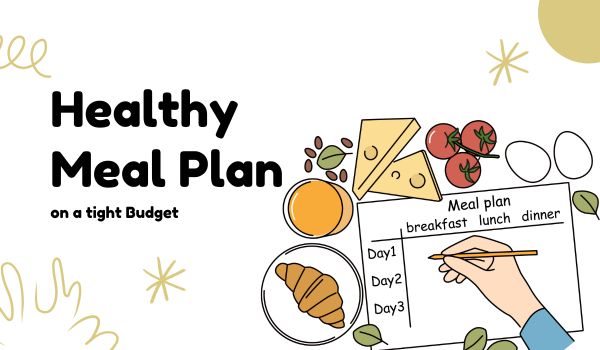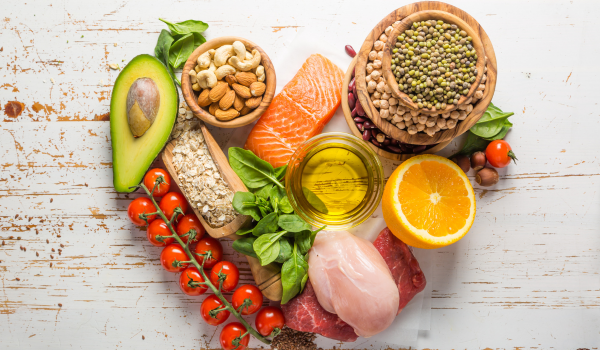
1-8. Grocery Shopping Tips
1. Stick to Your Grocery List
Planning your meals ahead and sticking to a grocery list is one of the best ways to avoid unnecessary purchases. By focusing on the perimeter of the store, where fresh produce and whole foods are typically located, you can avoid the temptation to buy processed foods found in the middle aisles. Consider using a grocery list app to stay organized and on track.
Summary: Stick to your list, and shop the perimeter for whole foods.
2. Don’t Shop When You’re Hungry
Shopping on an empty stomach often leads to impulse buys, especially processed snacks. Before heading to the store, have a healthy snack like fruit or yogurt to curb hunger and stay focused on your list.
Summary: Avoid shopping hungry to minimize impulse buys.
3. Buy Whole Foods
Whole foods are often cheaper than their processed counterparts. For instance, a block of cheese is less expensive than pre-shredded cheese, and canned beans are cheaper than refried ones. Whole grains like brown rice and oats cost less than processed cereals.
Summary: Whole foods, especially in their unprocessed form, are more cost-effective.
4. Avoid Highly Processed Foods
Highly processed foods such as sodas, cookies, and prepackaged meals are not only expensive but also lack essential nutrients. By cutting these out, you can allocate more of your budget to nutrient-dense foods.
Summary: Skip processed foods to save money and improve nutrition.
5. Stock Up on Sales
When healthy staples go on sale, stock up! Just make sure they won’t expire soon, so you don’t waste money. This way, you save money in the long run and avoid last-minute purchases.
Summary: Take advantage of sales to stock up on essentials.
6. Shop for In-Season Produce
In-season produce is cheaper and fresher. Buy local, in-season fruits and vegetables to get the best price and maximum nutrients. You can even freeze extra produce for later use.
Summary: In-season produce is affordable and nutritious. Freeze extras for later use.
7. Buy in Bulk
Buying grains, beans, and lentils in bulk can save you money. These items last longer and can be used in a variety of meals. Store them in airtight containers for long-term use.
Summary: Bulk purchases of staple foods can save you money and reduce waste.
8. Use Coupons Wisely
Coupons can help you save, but be strategic. Use them for essential items like nutritious foods and cleaning products, avoiding processed food coupons.
Summary: Use coupons for essential, nutrient-rich items to maximize savings.
9-14. Inexpensive Alternatives
9. Buy Generic Brands
Generic brands often provide the same quality as name-brand products but at a lower price. Always check ingredients to ensure the quality meets your standards.
Summary: Opt for generic brands to save money without sacrificing quality.
10. Buy Cheaper Cuts of Meat
Fresh meat can be expensive, but cheaper cuts like chuck steak, pork sirloin, or whole chicken can be just as versatile. Use these in casseroles, soups, and stir-fries.
Summary: Cheaper cuts of meat can be used in a variety of budget-friendly meals.
11. Shop from Online Retailers
Some online retailers offer healthy foods at up to 50% less than traditional grocery stores. By registering for deals, you can have nutritious foods delivered straight to your door.
Summary: Online retailers offer discounts and home delivery for healthy foods.
12. Replace Meat with Other Protein Sources
Reducing meat consumption can save you money. Try incorporating affordable protein sources like beans, legumes, eggs, and canned fish into your meals.
Summary: Replace meat with beans, legumes, or canned fish for cost-effective protein.
13. Buy Frozen Fruits and Vegetables
Frozen produce is just as nutritious as fresh and is often cheaper. It’s available year-round and can be used in smoothies, soups, and as meal toppings.
Summary: Frozen fruits and vegetables are a cost-effective and nutritious alternative.
14. Appreciate Less Expensive Foods
Foods like eggs, beans, seeds, and whole grains are affordable and nutrient-dense. Incorporate these into your meals for a healthier, more budget-friendly diet.
Summary: Use inexpensive, nutritious foods like eggs, beans, and seeds in your meals.
15-19. At-Home Tips
15. Plan Your Meals
Meal planning is crucial for saving money. Choose one day a week to plan your meals, make a grocery list, and check your pantry to avoid buying duplicates. Stick to what you know you’ll use.
Summary: Plan meals ahead and make a grocery list to avoid unnecessary purchases.
16. Cook at Home
Cooking at home is much cheaper than dining out. It also allows you to control the ingredients. Prepare large batches of meals for the week or cook one meal at a time based on your schedule.
Summary: Cooking at home saves money and gives you control over ingredients.
17. Cook Large Portions and Use Leftovers
Cooking in bulk can save you both time and money. Use leftovers for lunches, or incorporate them into other recipes like stews, salads, and burritos.
Summary: Make large meals and use leftovers to minimize food waste and reduce costs.
18. Grow Your Own Produce
If you have space, growing your own herbs and vegetables can save money and provide fresh, organic produce. Start with easy-to-grow options like tomatoes, onions, or herbs.
Summary: Grow your own produce to save money and enjoy fresh ingredients.
19. Pack Your Lunch
Packing your own lunch is a great way to save money and control what goes into your food. Meal prep large portions to have easy lunches ready throughout the week.
Summary: Packing your lunch helps you control your food costs and make healthier choices.
The Takeaway
Eating healthy on a budget is achievable with planning, smart shopping, and cooking at home. By focusing on whole foods, buying in bulk, and choosing nutritious alternatives, you can enjoy a balanced diet without overspending. Avoiding processed foods not only saves money but helps prevent health issues down the line, ultimately saving you on future medical costs. Invest in your health today for a better tomorrow.






.png)
.png)
.png)






.png)
.png)
.png)
.png)
.png)
.png)
.png)
.png)
.png)



.png)


.jpg)




















